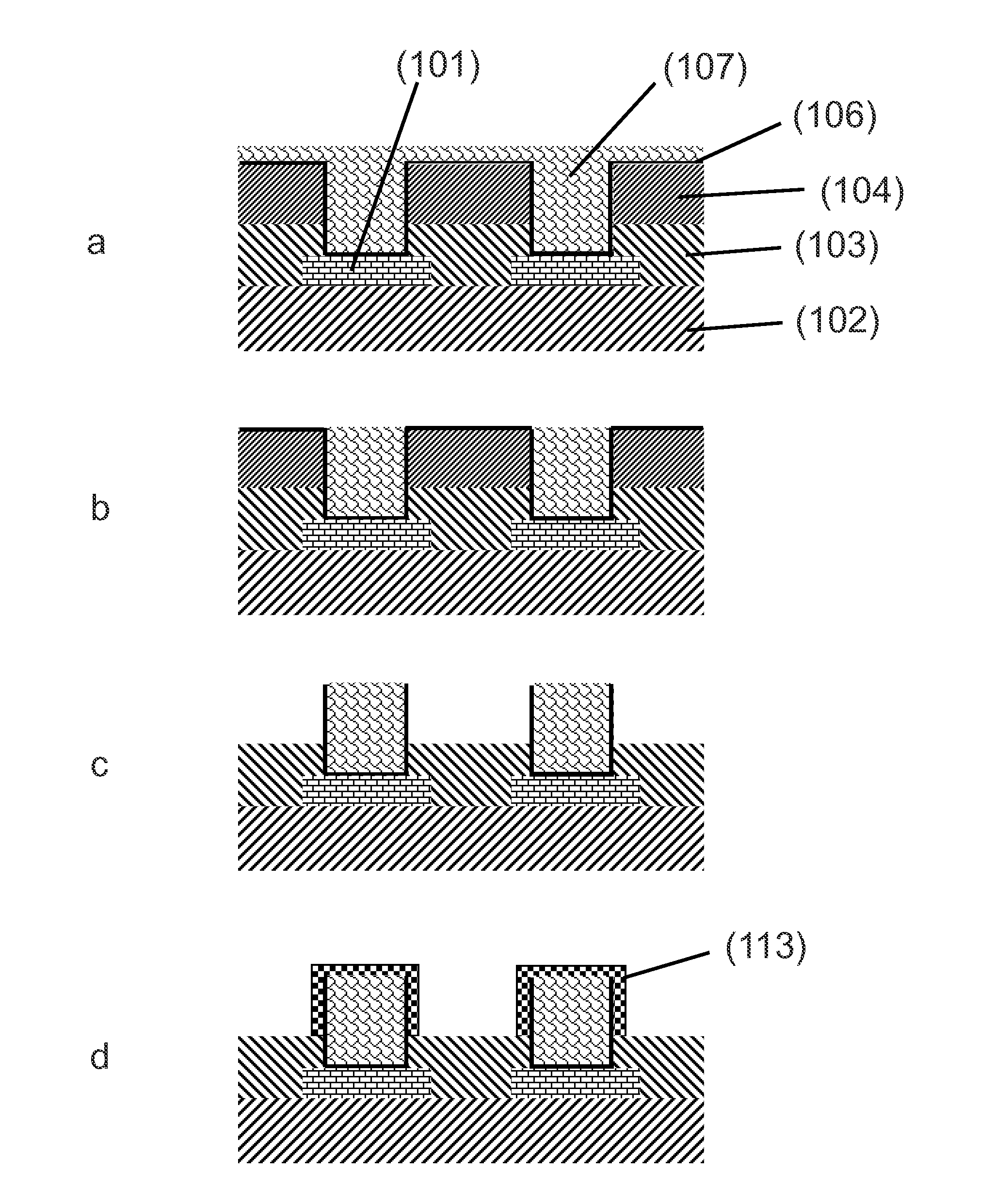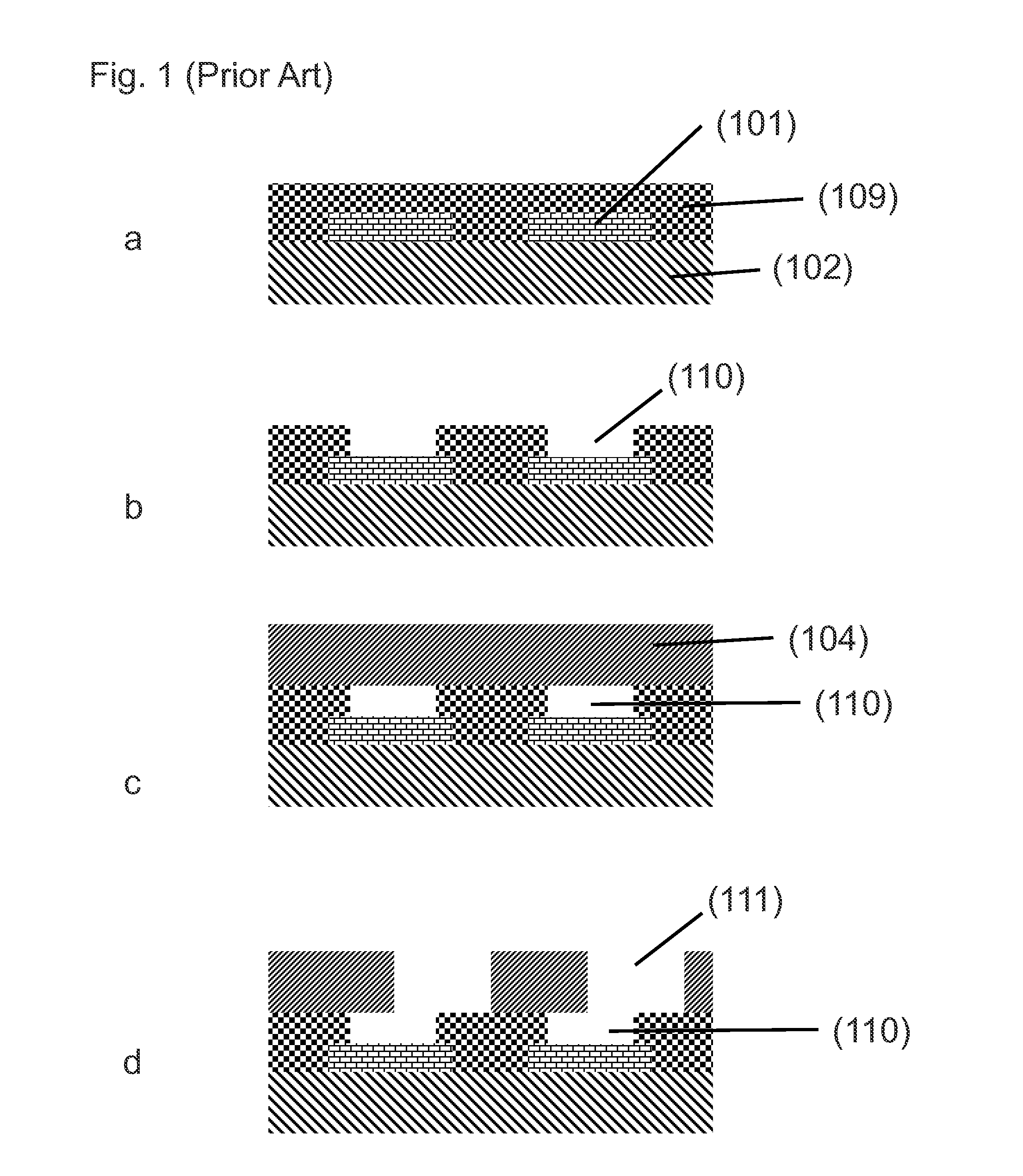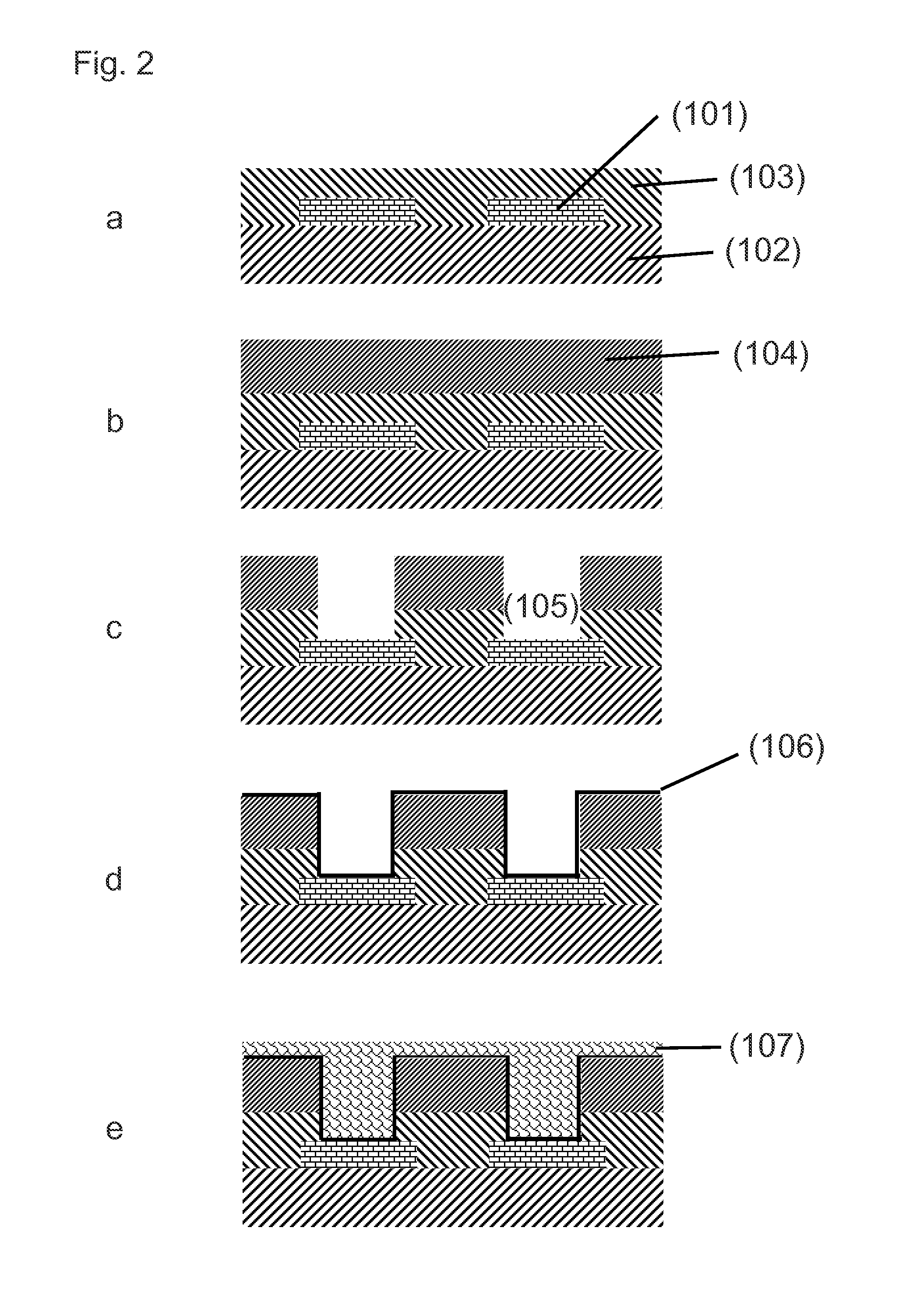Method to form solder deposits and non-melting bump structures on substrates
a technology of substrates and bump structures, applied in the direction of printed circuit manufacturing, basic electric elements, electric apparatus, etc., can solve the problems of requiring various patterning steps, silicon chip and organic board structure has experienced an obvious explosive growth, and the flip chip device mounted on a low-cost organic circuit board has experienced a dramatic growth
- Summary
- Abstract
- Description
- Claims
- Application Information
AI Technical Summary
Benefits of technology
Problems solved by technology
Method used
Image
Examples
example 1
[0154]An IC substrate is used having a contact pad structure according to FIG. 2a.
[0155]The non-conductive substrate (102) consists of GX-13 material (manufacturer: Ajinomoto Fine-Techno Co., Inc.), the permanent resin layer (103) consists of GX-92 material (manufacturer: Ajinomoto Fine-Techno Co., Inc., height of the layer: 25 μm) and the contact pads consist of copper.
[0156]A temporary resin layer (104) (DuPont PM 200, height: 50 μm) was laminated onto the permanent resin layer (103).
[0157]Next, contact area openings (105) are formed through the temporary resin layer (104) and the permanent resin layer (103) with a UV laser in one step. The diameter of the contact area openings (105) is 100 μm.
[0158]The plating sequence is according to FIG. 2d to e. First, a first conductive seed layer (106) of copper is formed on the entire substrate surface. For this the surface is first contacted with an acidic solution containing ionogenic palladium and then with a solution for electroless co...
example 2
[0165]A non-melting bump structure (112) consisting of a tin-copper alloy with a solderable cap layer (113) made of tin was manufactured. An IC substrate is used having at least one contact area structure according to FIG. 2a.
[0166]The non-conducting substrate (102) consists of GX-13 material (manufacturer: Ajinomoto Fine-Techno Co., Inc.), the permanent resin layer (103) consists of GX-92 material (manufacturer: Ajinomoto Fine-Techno Co., Inc., height of the layer: 25 μm) and the contact pads (101) consist of copper.
[0167]A temporary resin layer (104) (DuPont PM 200, height: 50 μm) was laminated onto the permanent resin layer (103).
[0168]Next, contact area openings (105) are formed through the temporary resin layer (104) and the permanent resin layer (103) with a UV laser in one step. The diameter of the contact area openings (105) is 100 μm.
[0169]The plating sequence is according to FIG. 2d to e. A first conductive seed layer (106) of copper is formed on the entire substrate surf...
example 3
[0177]A non-melting bump structure (112) consisting of copper with a solderable cap layer (113) made of tin was manufactured.
[0178]An IC substrate comprising a non-conductive substrate (102), contact areas (101), a permanent resin layer (103) and a temporary resin layer (104) as used in Example 1 is provided.
[0179]Contact area openings (105) are formed through the temporary resin layer (104) and the permanent resin layer (103) with a UV laser in one step. The diameter of the contact area openings (105) is 100 μm. The plating sequence is according to FIG. 2d to e. A first conductive seed layer (106) of copper is formed on the entire substrate surface. For this the surface is first contacted with an acidic solution containing ionogenic palladium and then with a solution for electroless copper deposition.
[0180]Thereafter, a copper layer (107) is electroplated onto the first conductive seed layer (106) from a bath containing: 45 g / l Cu2+ as CuSO4, 50 ml / l H2SO4, 1 ml / l brightener and 20...
PUM
| Property | Measurement | Unit |
|---|---|---|
| Tg | aaaaa | aaaaa |
| Tg | aaaaa | aaaaa |
| Tg | aaaaa | aaaaa |
Abstract
Description
Claims
Application Information
 Login to View More
Login to View More - R&D
- Intellectual Property
- Life Sciences
- Materials
- Tech Scout
- Unparalleled Data Quality
- Higher Quality Content
- 60% Fewer Hallucinations
Browse by: Latest US Patents, China's latest patents, Technical Efficacy Thesaurus, Application Domain, Technology Topic, Popular Technical Reports.
© 2025 PatSnap. All rights reserved.Legal|Privacy policy|Modern Slavery Act Transparency Statement|Sitemap|About US| Contact US: help@patsnap.com



